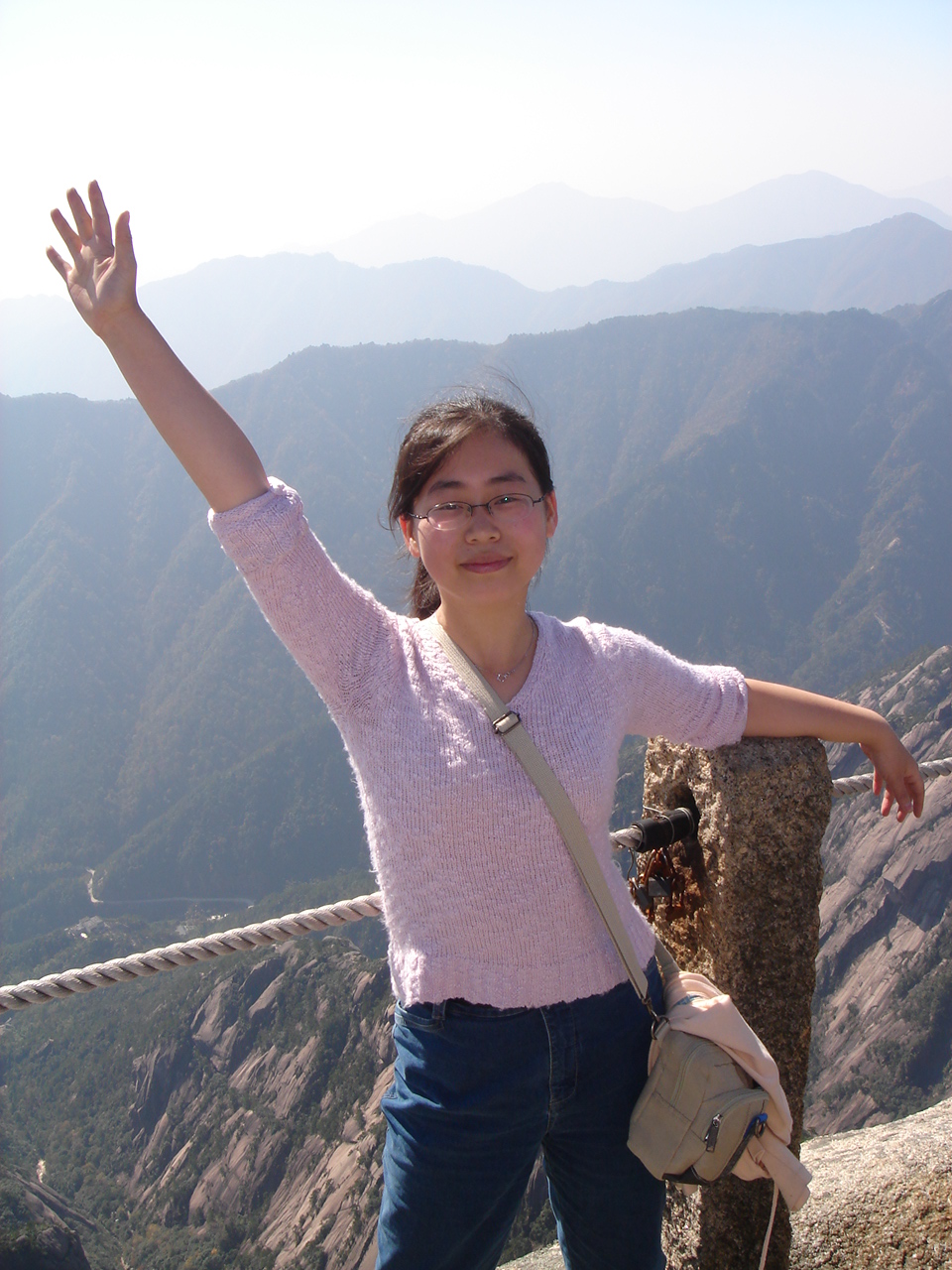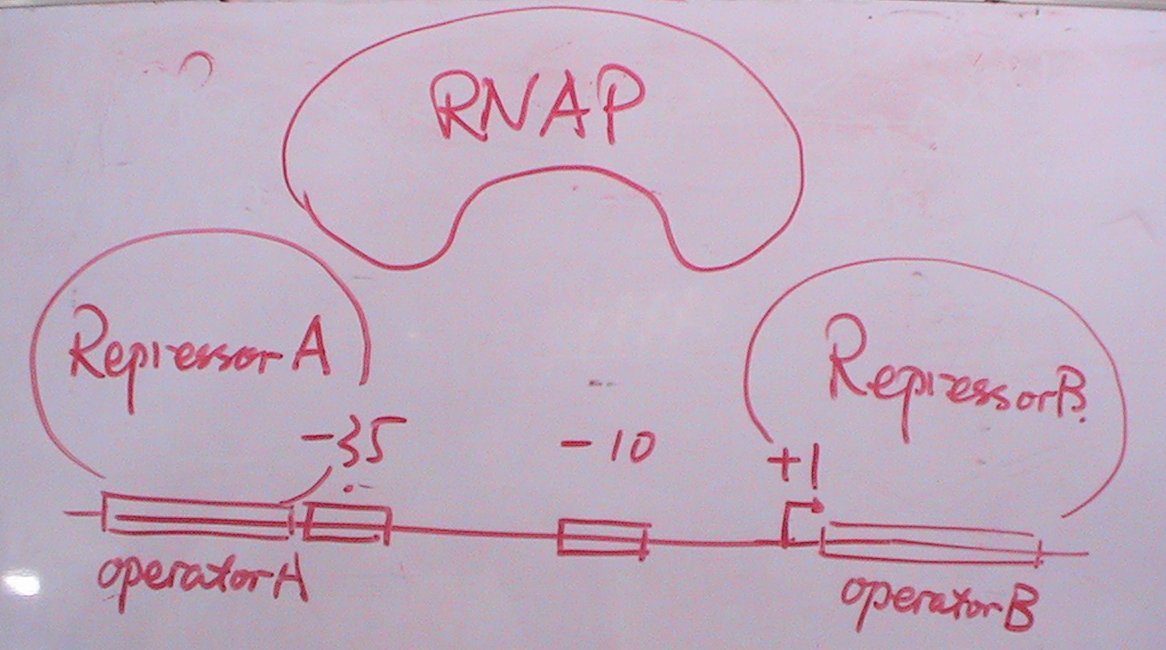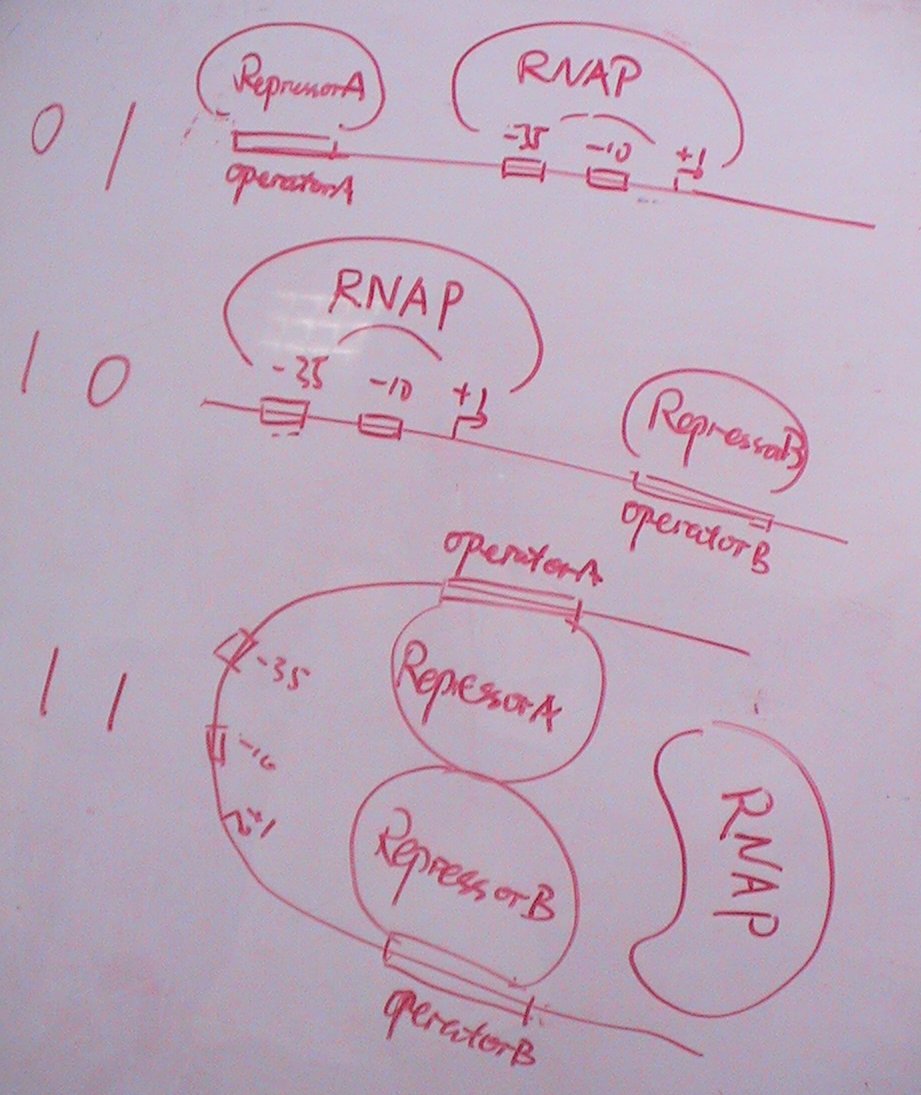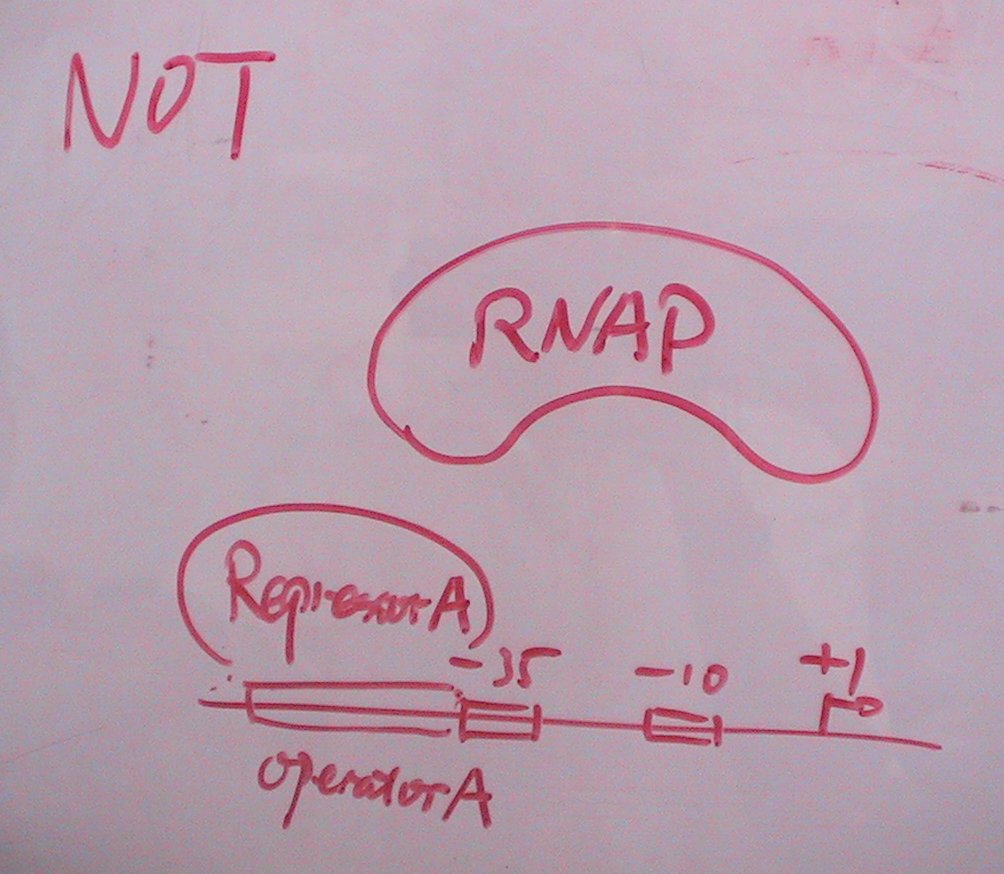USTC/ZhaoYun
From 2007.igem.org
m |
m (→Academic Activities) |
||
| (2 intermediate revisions not shown) | |||
| Line 36: | Line 36: | ||
And the fourth one is that I discussed ranges of several parameters that are suitable for NAND, NOR, NOT Gate, with the help of data of DNA looping reported on previous papers. And I have attempted to synthesize and test the targeted artificial logic promoters. | And the fourth one is that I discussed ranges of several parameters that are suitable for NAND, NOR, NOT Gate, with the help of data of DNA looping reported on previous papers. And I have attempted to synthesize and test the targeted artificial logic promoters. | ||
Finally, I succeed to find the sequence pattern for NAND and NOT promoters, together with a not so perfect NOR promoter, in a systematic method. | Finally, I succeed to find the sequence pattern for NAND and NOT promoters, together with a not so perfect NOR promoter, in a systematic method. | ||
| + | |||
| + | |||
| + | Here are the very rudiment of the three logic gates taken from one of our group meetings. | ||
{| | {| | ||
| Line 65: | Line 68: | ||
Presentation in Tianjin iGEM TTT Workshop in June 2007 | Presentation in Tianjin iGEM TTT Workshop in June 2007 | ||
| + | |||
Title: “Another Implementation of A Half Adder” | Title: “Another Implementation of A Half Adder” | ||
Latest revision as of 05:28, 27 October 2007
Contents |
Contact:
Address:
Room 438, Life Science Building, University of Science and Technology of China
Hefei, Anhui, P.R.China (230027)
Email:
zhaoyun@mail.ustc.edu.cn (preference)
Tel:
+86-551-3602469
Mobile:
+86-13866776861
Research Work in iGEM
My major work in iGEM is to design and biologically implement three logic promoters: NAND,NOR and NOT. I attempt to systematically build up a procaryotic promoter family whose members contain different operons, that is, operons with different nucleotide sequences and different relative locations. We tested the expression activity under various combined signals of upstream repressors, and systematically study on how different operons influence the expression activity of repressors.
In detail, I have worked on four parts.
The first one is that I designed to use PCR method to build up the procaryotic promoter family.
The second one is that I measured and compared different repression efficiency according to the different locations of the two operons.
The third is that I measured and compared different repression efficiency according to the different nucleotide sequence of the two operons, and have found a way to alter the combination intensity of repressors.
And the fourth one is that I discussed ranges of several parameters that are suitable for NAND, NOR, NOT Gate, with the help of data of DNA looping reported on previous papers. And I have attempted to synthesize and test the targeted artificial logic promoters.
Finally, I succeed to find the sequence pattern for NAND and NOT promoters, together with a not so perfect NOR promoter, in a systematic method.
Here are the very rudiment of the three logic gates taken from one of our group meetings.
More detailed process about promoter design and logic gate construction, please refer to Logic-Gate Promoters.
Without doubt I must mention that all the work listed above is accomplished with much help of my senior fellow apprentices, Jian ZHAN and Rui MA. I am really grateful for their help and kindness.
Research Experience
(A)USTC iGEM Team Member Project: “Extensible Logic Circuit in Bacteria”. Succeed to find out the patterns for three bio-logic promoters, NAND, NOR, and NOT.
(B)Undergraduate Research Project Thesis title: “Artificial Bio-Logic Promoters, Model and Implementation”
(C)Undergraduate Internship Lab of Computational Biology, USTC Supervisor: Prof. Haiyan Liu
NNSFC(National Nature Science Foundation) Projects involved: “Theoretical Design and Experimental Analysis of Artificial Biological Network based on cell-cell communication”
Academic Activities
Presentation in Tianjin iGEM TTT Workshop in June 2007
Title: “Another Implementation of A Half Adder”



